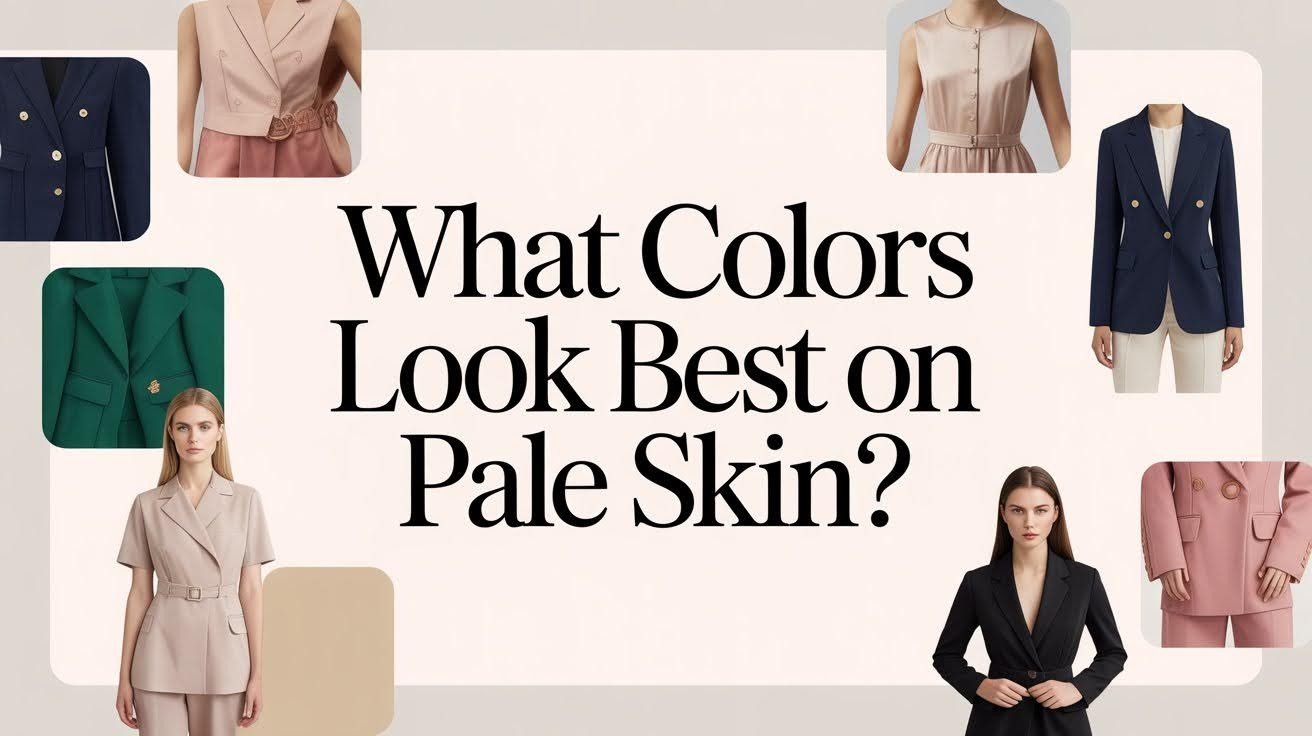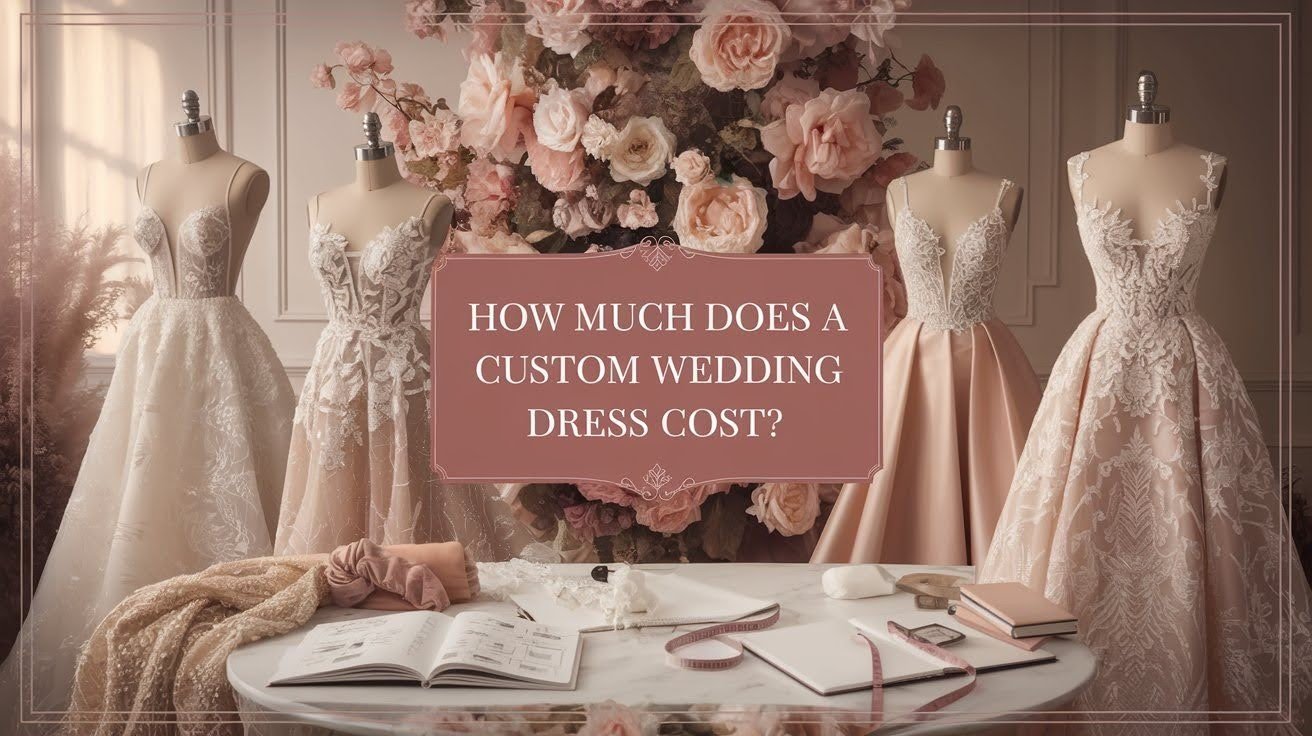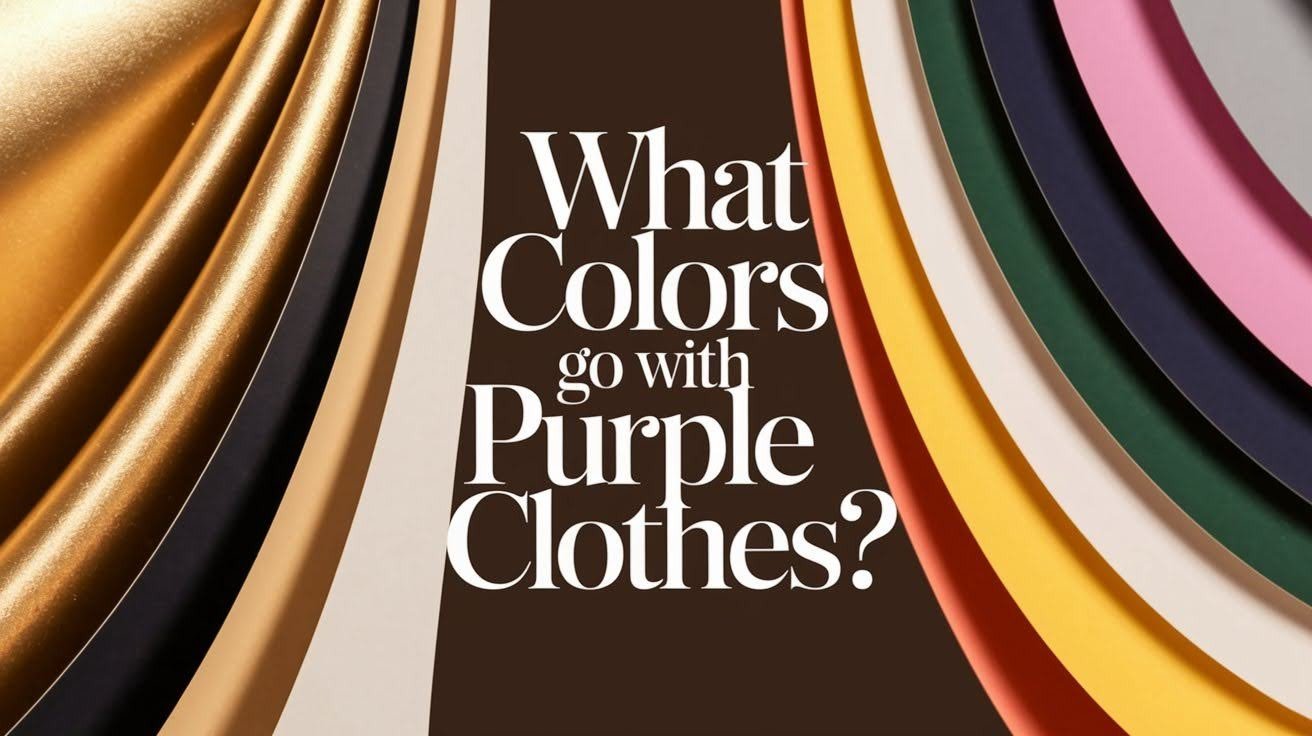Finding the right colors for pale skin can feel tricky. I get it. You’ve probably stood in front of your closet wondering why certain shades make you look washed out while others make you glow.
Here’s the thing: the right colors can completely change how you look and feel. With personal color analysis trending on social media, more people are learning this secret. But you don’t need expensive consultations or confusing charts.
In this article, I’ll show you exactly which colors work best for pale skin tones. We’ll cover warm and cool undertones, specific shade recommendations, and colors to avoid. I’ve spent years helping people find their perfect palette, and I’m sharing everything I know.
By the end, you’ll confidently choose colors that make you shine. Remember, the best color is always the one that makes you feel amazing.
Understanding Your Skin Tone & Undertone
Let me help you figure out your skin’s unique characteristics so you can pick colors that actually work.

Skin Tone Basics
Your skin tone is simply how light or dark your skin appears. If you have pale skin, you fall into the fair to light category. But here’s what most people don’t know: your undertone is way more important than your actual skin tone when it comes to choosing flattering colors.
How to Identify Your Undertone
The easiest way to find your undertone is to look at your wrist veins in natural light. Here’s what to look for:
- Warm undertones: Your veins appear green or yellow-green
- Cool undertones: Your veins look blue or purple
- Neutral undertones: Your veins seem bluish-green (lucky you!)
Your undertone stays the same whether you tan or not. It’s like your skin’s permanent filter. When you choose colors that match your undertone, your skin looks brighter and healthier. When you pick the wrong ones, you might look tired or washed out.
This is why your friend might look amazing in a color that makes you look sick. You probably have different undertones.
Best Colors to Wear If You Have Pale Skin
Here are the colors that will make your pale skin look radiant and healthy instead of washed out.
1. Emerald Green

This rich, jewel-toned green is pure magic on pale skin. It adds instant life to your complexion, especially if you have cool undertones or green/blue eyes. I’ve seen this color completely transform how someone looks.
2. Cobalt Blue

This bold blue works for almost everyone with pale skin, whether you’re warm or cool-toned. It brightens your face without being too intense. Think of it as the perfect middle ground between navy and electric blue.
3. Navy Blue

Navy is your best friend if black feels too harsh. It’s classic, goes with everything, and looks incredible with gold or silver accessories. Plus, it works for both casual and formal occasions.
4. Aqua

This light but vibrant blue-green creates beautiful contrast against pale skin. It’s perfect if you have blue eyes and want something fresh for warmer months.
5. Red

Red can be tricky, but the right shade is stunning. If you’re cool-toned, go for ruby, cherry, or crimson. Warm-toned? Try brick red, merlot, or tomato red. The key is matching your undertone.
6. Deep Purple / Burgundy / Plum

These rich, dark colors are showstoppers on cool-toned pale skin. They’re sophisticated and make a statement without overwhelming your complexion.
7. Pink

Pink works differently for everyone. Cool undertones look great in fuchsia, berry, and rose pink. Warm undertones should try coral, peach, or orangey pinks. Don’t be afraid to experiment.
8. Mustard Yellow

This warm yellow provides nice contrast without being too bright. It works especially well if you have warm undertones and darker hair.
9. Chocolate Brown

Rich brown is an excellent alternative to black. It’s warm and sophisticated, creating beautiful contrast against pale skin without being too stark.
10. Pastel Shades (Used Strategically)

Pastels like lavender, mint, and baby blue can work, but you need to be smart about it. They’re best for cool undertones and work better in spring/summer. Pair them with stronger makeup to avoid looking washed out.
Colors to Avoid for Pale Skin
These colors can make you look washed out, tired, or just plain unflattering, so it’s better to skip them or use them carefully.

1. Your Exact Skin Tone
Wearing colors that match your skin tone exactly will make you disappear. There’s no contrast, so you end up looking flat and boring. It’s like trying to blend into the background when you should be standing out.
2. Light Pastels (Near Face)
Pastels close to your face can drain all the color from your complexion. You’ll look tired even when you feel great. If you love pastels, wear them as accessories or away from your face instead.
3. Black (Overdone)
Don’t get me wrong, black can look amazing. But if you wear it wrong, it becomes too harsh against pale skin. It can age you or make you look even paler than you are. The key is styling it right with makeup and accessories.
4. Neon Shades
Bright neons are just too much for most pale skin tones. They overpower your natural coloring and can actually make your skin look gray or sickly. Save these for small accents if you really love them.
5. White
Pure white often doesn’t provide enough contrast against pale skin. Instead of looking crisp and clean, you might end up looking dull or unwell. Off-white or cream shades usually work much better.
Neutral Tones That Work
These versatile neutral colors will become your wardrobe staples because they complement pale skin beautifully.

Neutrals don’t have to be boring when you have pale skin. The right ones can actually make you look polished and put-together without any effort.
Soft greys are perfect if you find black too harsh. They’re gentle on your complexion while still looking sophisticated. Light to medium greys work especially well.
Taupe is that perfect beige-brown that goes with everything. It’s warm enough to flatter your skin but neutral enough to pair with any other color in your closet.
Camel brings warmth to your face without being too bold. This rich tan color looks expensive and works beautifully with both gold and silver accessories.
Rich browns in deeper shades like chocolate or espresso create lovely contrast against pale skin. They’re much more flattering than light browns, which can make you look washed out.
Muted olives might surprise you, but these soft green-browns are incredibly flattering on pale skin. They’re earthy and sophisticated, especially if you have warm undertones.
The best part about these neutrals? They all work together, so mixing and matching is easy.
Tips for Styling Colors on Pale Skin
Use Contrast to Your Advantage
- Wear bold colors close to your face with tops, scarves, and statement jewelry
- Keep darker or more vibrant shades near your neckline for maximum impact
- Save lighter colors for bottoms or layers away from your face
Try Before You Commit
- Hold clothes up to your face in natural daylight before buying
- Check how colors look against your skin in different lighting
- Trust your first instinct if something looks off
Incorporate Color Through Accessories
- Add pops of bold color with earrings, necklaces, and handbags
- Use colorful scarves to instantly brighten neutral outfits
- Choose statement accessories in your best colors for easy styling
Balance Light Shades With Bold Makeup
- Pair pastel clothing with defined lips or stronger blush
- Add mascara and eyeliner when wearing softer colors
- Use makeup to create the contrast that light colors can’t provide
Conclusion
Your pale skin is already beautiful exactly as it is. No tanning required, no apologies needed. The secret isn’t changing your skin tone but finding the right colors that create contrast and balance with your natural complexion.
Take time to experiment with different shades and pay attention to how they make you feel. Your personal color palette is unique to you, and discovering it should be fun, not stressful. Try new combinations, test colors in natural light, and trust your instincts.
Remember that all the color theory in the world means nothing if you don’t feel good in what you’re wearing. The most flattering color is always the one that makes you stand taller and smile brighter. Confidence never goes out of style, and it looks incredible on everyone.
Frequently Asked Questions
What’s the difference between skin tone and undertone?
Your skin tone is how light or dark your skin appears, while undertone is the subtle color beneath the surface. Undertone stays the same whether you tan or not and is crucial for choosing flattering colors.
Can people with pale skin wear bright colors?
Absolutely! Bright colors like emerald green, cobalt blue, and the right shade of red can look stunning on pale skin. The key is choosing colors that complement your undertone rather than clash with it.
Why does black sometimes look harsh on pale skin?
Black creates very strong contrast against pale skin, which can appear too stark if not balanced properly. Try softer alternatives like navy blue or charcoal gray, or style black with the right makeup and accessories.
Should I avoid all pastel colors if I have pale skin?
Not necessarily, but be strategic about how you wear them. Light pastels can wash you out when worn near your face, but they work well as accessories or when paired with bold makeup.
How do I know if a color works for me?
Hold the color up to your face in natural light and notice if your skin looks brighter and healthier or dull and tired. Trust your gut feeling about how the color makes you look and feel.








